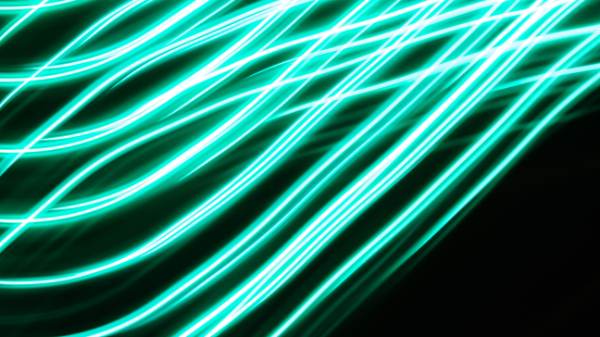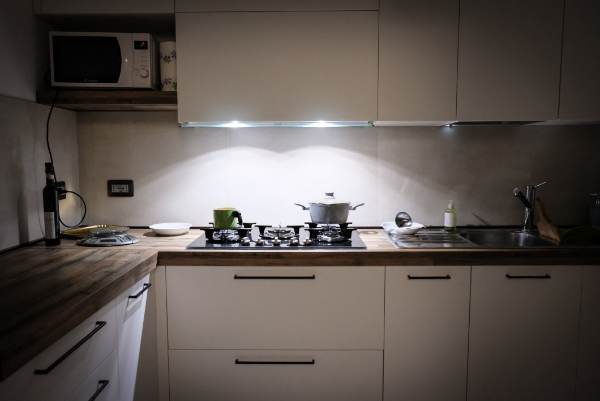Tiny light sources (or LEDs) disperse or dissipate into the environment as current flows through a chip, shining light in all directions. But after a few months of use, the LED strip’s crisp blue-white is either turning yellow or disappearing altogether. What gives, then, that some of your LED lights are a different color? Read the article and you will know why part of your LED lights are a different color.
What Is LED
The acronym LED stands for “Light Emitting Diodes.” Your electricity bills will go down because of the far lower wattage needed to operate this modern method of lighting.
In addition, a lot more features that aren’t possible with more conventional bulbs are built into LEDs. These tiny light sources (the LEDs) are illuminated by an electric current that is passed through a chip, which is how they operate.
The LEDs then control the temperature changes that may occur as a byproduct of this process and manage to generate enough power to illuminate the bulb itself.
A heat sink is also integrated. This prevents there from being any performance issues in the long run. Despite the fact that they are unquestionably made to last, it is clear that many things can and will go wrong at some point.
Reasons Why LED Lights Different Colors
LED Strips Are Overheating
The various parts that makeup LED strips as well as the proper heat dissipation elements are required.
The first is the adhesive tape that comes with the LED strip. An adhesive with cooling properties is frequently used by reputable manufacturers.
Ceramic particles in the tape can dissipate heat away from the sensitive diodes and wick it away from the strip.
Then come housings and conduits for LED strips, which are optional features but have the potential to significantly reduce overheating.
Due to the conductive qualities of aluminum, the casings or channels serve as a heat sink and assist in cooling the strip.

Installing aluminum channels will prevent overheating and extend the lifespan of your LEDs if you’re serious about making your LED strip setup last in a professional environment.
In the end, a lot will depend on where and on what surface you mount your strips.
Typically, we start looking under beds, cabinets, and other pieces of furniture. Overheating results from the fact that wood is a good insulator and holds onto the heat from the strip.
If possible, mounting the strip lights on ceramic or metallic surfaces will significantly aid in heat dissipation.
The ambient temperature in which the LED must operate will increase if you put them in confined or hot areas of the house, such as next to stoves or other electronics like the TV or gaming consoles.
A shorter lifespan for your LED light strips will result from this once more.
Voltage Drop
Two copper ribbons that run the length of the LED strip lights serve as the wires when using them. As you get further from the power source, your strips’ color will change. This is a result of a voltage drop.
Consider an electrical circuit. There are wires that are positive and negative. Until it reaches the other wire, the current travels along one wire after another.
They don’t function that way at all if you want to use a lot of inexpensive LED strips. Electricity is produced using copper, a metal. The copper content in cheaper LED strips is lower than in more expensive ones. Because there is more resistance and less copper, the voltage drop will be greater.
Paint In Circuits
It’s very easy to accidentally paint over LEDs, which is one of the less-commonly known but frequently occurring causes of LED failure.
The following is a common occurrence among lighting experts:
People may choose to paint their LED strip light setups around the home or office once they have been instalLED, or they may choose to do so later.
The diode will emit light that appears dull, faded, or even an entirely different color if even the smallest drop of paint touches it.
The best way to ensure full illumination when painting your strips is to keep them protected and use paint removers to remove any previously applied paint.
One of the worst consequences of painting your strip light is that some paint may end up inside the wiring or circuitry.
In this situation, it might completely short out or harm the strip, causing it to flicker, experience unexpected color changes, or just stop functioning altogether.
Not Enough Air Ventilation
As was mentioned earlier, when LED strip lights don’t get enough cooling, they overheat and the diodes can change color.
One of the main causes of this is inadequate air ventilation near the lighting setup. Warm air cannot be removed and cooler air cannot circulate because of the lack of space.
To avoid this, one typically needs to choose the appropriate location for them.
Not really suitable locations include those behind couches and beds, in the space between a cabinet’s back panel and a wall, or inside the frame of a small shelf with sharper corners. Proper air ventilation would not be possible in all areas.
Read more: Why My Led Lights Not Working?
How To Fix LED Lights That Are Different Colors
Your LED lights won’t be affected, so do not worry too much. They’ve all experienced the same technical issue with their LED lights. How to fix LED lights with various colors is one of the most frequently asked questions.” “What should one do if the remote’s colors no longer match the hues of the strip lights?” and “Why are the colors in my RGBW LED strip lights the wrong ones?”
Here’s a quick solution that many people have found to be useful for fixing these issues.
- Make sure the LED lights have a proper voltage supply and that all of their components are connected securely first.
- The system must then be shut down once more.
- The remote control has a FADE7 button. Press that.
- The LED lights are now ready to be turned back on.
- Press the color buttons on the remote control one at a time as soon as it is turned on. You’ll observe that the LED lights will return to their initial shape or color.
- In order to keep the color of the diodes unchanged, overheating of the LED light strips can be avoided with the aid of a good ventilation system.
The best solution would be to replace your LEDs if your LED color doesn’t appear to return to its original state. Better if you already have a warranty card. On your next purchase, make sure to purchase high-quality LED lights to prevent issues like this.
